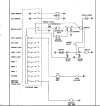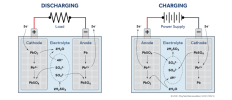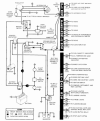Ed Haywood
En-Route
As the title says. No charging flow shown when engine runs, even right after startup. No negative flow shown when all electrical components on and engine not running. Needle does not move at all.
Voltmeter at bus reads 14.3v with engine running, and 12.3v with engine off. I have flown 10 hours and several dozen engine starts since problem began, with no reduction in voltage.
Ammeter was installed new and run for the first time 2 months ago. It indicated correctly until about a month ago. It has an internal shunt.
I have checked all connections. Only thing I can think of is an internal gauge fault, perhaps with the shunt.
Before I return it, are there any other possibilities I should consider?
Voltmeter at bus reads 14.3v with engine running, and 12.3v with engine off. I have flown 10 hours and several dozen engine starts since problem began, with no reduction in voltage.
Ammeter was installed new and run for the first time 2 months ago. It indicated correctly until about a month ago. It has an internal shunt.
I have checked all connections. Only thing I can think of is an internal gauge fault, perhaps with the shunt.
Before I return it, are there any other possibilities I should consider?
Last edited:





